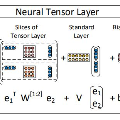Multi-connectivity (MC) in satellite-terrestrial integrated networks (STINs), included in the Third-Generation Partnership Project (3GPP) standards, is regarded as a promising technology for future networks, especially the non-terrestrial network (NTN). The significant advantages of MC in improving coverage, communication, and sensing through satellite-terrestrial collaboration have sparked widespread interest. This article introduces three fundamental deployment architectures of MC systems in STINs, including multi-satellite, single-satellite single-base-station, and multi-satellite multi-base-station configurations. Considering the emerging but still evolving satellite networking, we explore system design challenges such as satellite networking schemes, such as cell-free and multi-tier satellite networks. Subsequently, key technical challenges severely influencing the quality of mutual communications, including beamforming, channel estimation, and synchronization, are discussed. Furthermore, typical applications such as coverage enhancement, traffic offloading, collaborative sensing, and low-altitude communication are demonstrated, followed by a case study comparing coverage performance in MC and single-connectivity (SC) configurations. Several essential future research directions for MC in STINs are presented to facilitate further exploration.
翻译:暂无翻译




